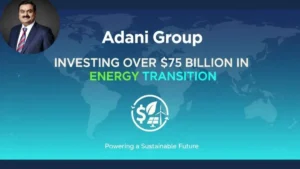The Insurance Regulatory and Development Authority of India (IRDAI) has once again designated Life Insurance Corporation of India (LIC), The New India Assurance Company, and General Insurance Corporation of India (GIC Re) as Domestic Systemically Important Insurers (D-SIIs) for the year 2024-25. These insurers are considered critical to the stability of the Indian financial system due to their size, market importance, and interconnection with the domestic and global economy.
Key Highlights
What are D-SIIs?
- Insurers whose failure or distress could cause significant disruption to the domestic financial system.
D-SII Insurers for 2024-25
- LIC (Life Insurance Corporation of India)
- The New India Assurance Company
- GIC Re (General Insurance Corporation of India)
Enhanced Regulatory Supervision
- These insurers will be subjected to stricter regulatory measures to ensure financial stability and risk management.
IRDAI’s 129th Meeting Outcomes (March 12, 2025)
- Approval of Valueattics Reinsurance, the first private reinsurer in the revamped regulatory environment.
- Review of the Bima Sugam e-marketplace project.
- Progress on Indian Risk-Based Capital (RBC) and Risk-Based Supervisory Framework.
- Introduction of the State Insurance Plan, supported by a multi-tiered governance model to identify protection gaps at local levels (State, district, urban, and gram panchayat).
Valueattics Reinsurance Details
- Promoted by Prem Watsa-backed FAL Corporation and Go Digit founder Kamesh Goyal.
- First private reinsurer in India with a license for reinsurance business.
- Initial paid-up capital: ₹210 crore.
- Will provide a full spectrum of risk coverage through Go Digit General Insurance, Go Digit Life Insurance, and Valueattics Re.
| Summary/Static | Details |
| Why in the news? | LIC, New India Assurance, GIC Re Retain D-SIIs Status for 2024-25 |
| D-SIIs for 2024-25 | LIC, New India Assurance, GIC Re Retain |
| Regulatory Authority | Insurance Regulatory and Development Authority of India (IRDAI) |
| Purpose of D-SII Tag | Prevent financial instability due to the failure of key insurers |
| Enhanced Supervision | Stricter risk management and regulatory oversight |
| New Reinsurance Player | Valueattics Reinsurance |
| Promoters | Prem Watsa (FAL Corporation) & Kamesh Goyal (Go Digit) |
| Initial Capital | ₹210 crore |
| Bima Sugam Project | An e-marketplace for insurance products |
| State Insurance Plan | Multi-tiered governance model for localized insurance coverage |



 Amul Renews Partnership with Argentina F...
Amul Renews Partnership with Argentina F...
 Adani Group to Invest Over $75 Billion i...
Adani Group to Invest Over $75 Billion i...
 Tata–Lockheed Martin to Build New MRO Fa...
Tata–Lockheed Martin to Build New MRO Fa...







